There are 3 basic laws for logarithms and
they each come from the three basic laws for
combining exponents .
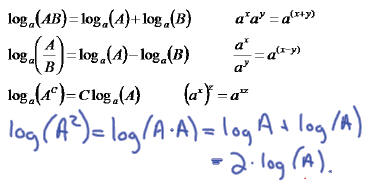
These are the common mistakes with
Logarithms. Watch for these.
There is often not much you can do to
simplify expressions like these (either the
left side or the right).

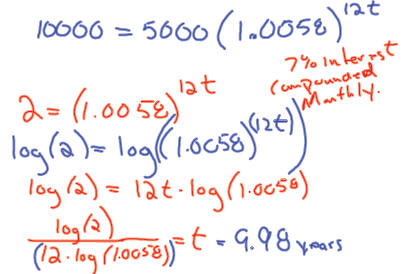
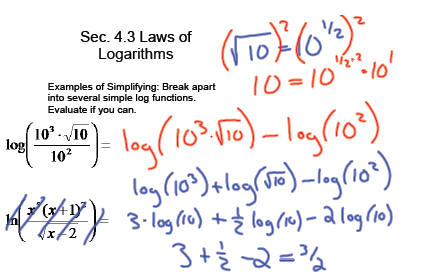
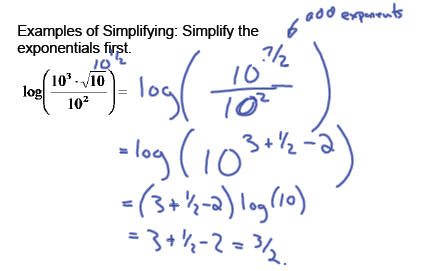

Examples of Simplifying : Combine into a
single (more complicated) log function .
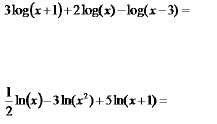
Change of Base Formula
It is often useful to change a logarithm to
either base ’10’ or base ‘e’.
To change  into
into

Start with

Take log base ‘a’ of both sides

Solve for y

This gives the formula (usually used with
‘log’ or ‘ln’)

There is a similar way to change bases in
exponents.

Guidelines for Solving Exponential Equations (page 359)
· Isolate the exponential expression on one side of the equation
· Take the logarithm of each side, then “bring down the exponent”
(which gets the variable out of the exponent )
· Use algebra to solve for the variable. And check your answer.
Guidelines for Solving Logarithmic Equations (page 362)
· Isolate the logarithmic expression on one side of the equation (you
may first need to combine the log terms )
· Raise the base to each side of the equation. (This gets rid of the log
function)
· Use algebra to solve for the variable . And check your answer.
Suppose the population of a small town is increasing at a
rate of 5% each year.
In 2000, the population was 25,000 people.
Find a formula for the Population 't' years later.
What is the population today?
When will the population reach 100,000?
Examples

Examples of Exponential equations.

Examples. Try it two ways . First, get the exponential part
by itself, then take logs.
Second. Take Logs to start and use Laws of Logarithms to simplify.

Examples of Logarithm Equations

Examples.

Examples.

Hw Problems Sec. 4.3 Use the Laws of Exponents to Expand
the Logarithm into several simpler ones.

Hw Problems Sec. 4.3 Use the Laws of Exponents to combine
the Logarithms.
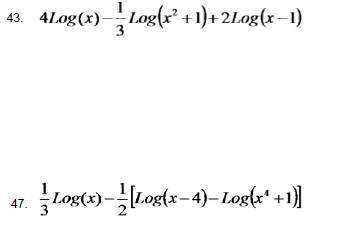
Hw Problems Sec. 4.4 Solve the following equations
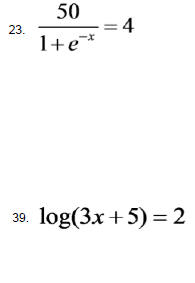
Hw Problems Sec. 4.4 Solve the following equations

HW Problems:
69. Find the time required for an investment of $5000 to grow to $8000 at an
interest rate of 7.5%
compounded quarterly .
HW 77. A small lake is stocked with fish. The population
is modeled by the function

where P(t) is the population (in thousands) t years after
the lake was stocked.
a) Find the population when t=0, when t= 3 and when t = 100 years.
b) After how many years will the population reach 5000
fish?